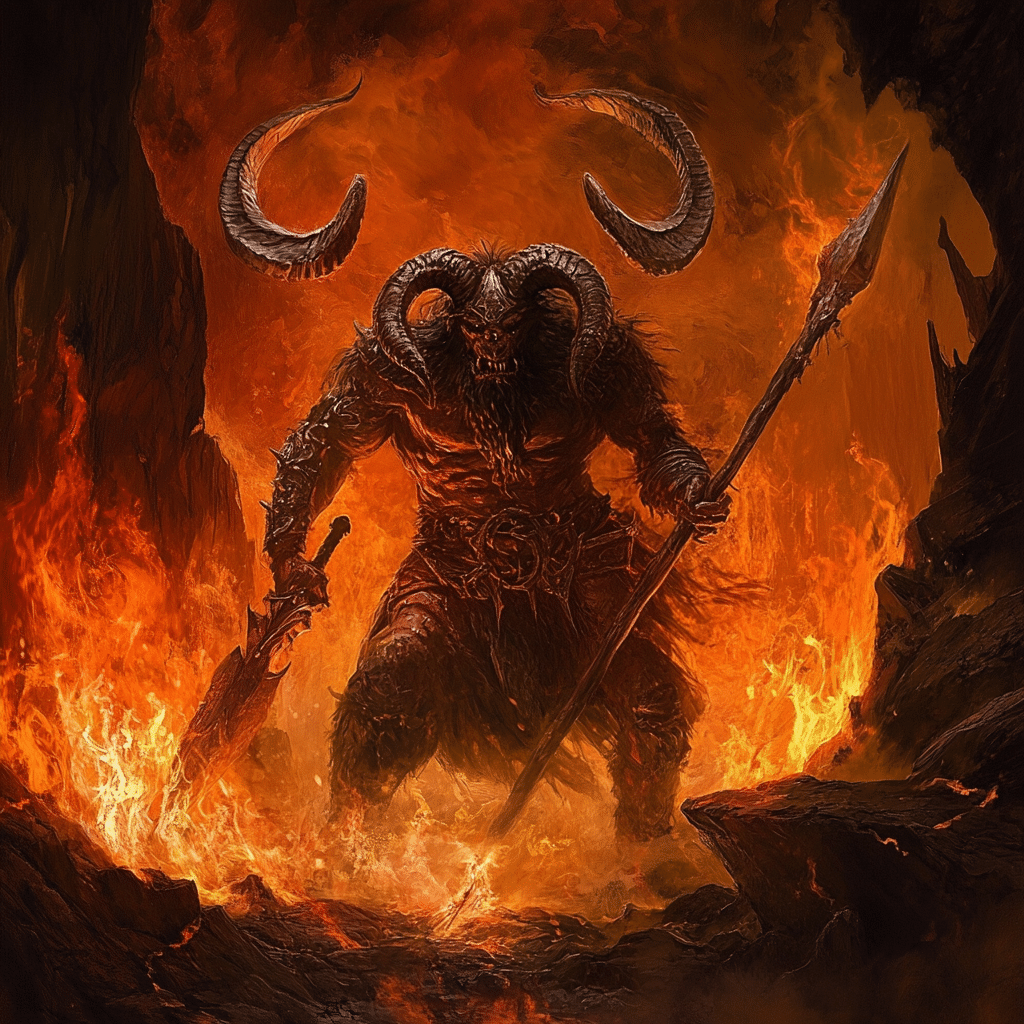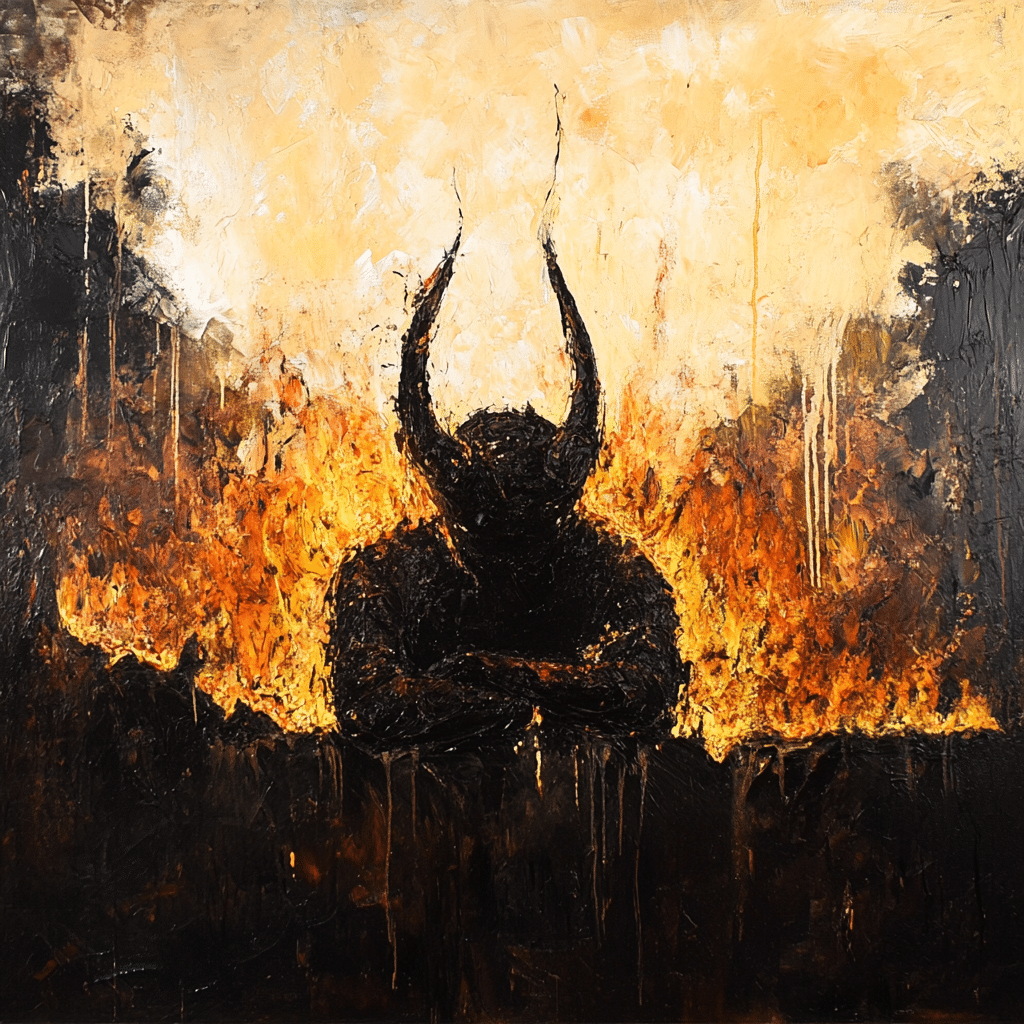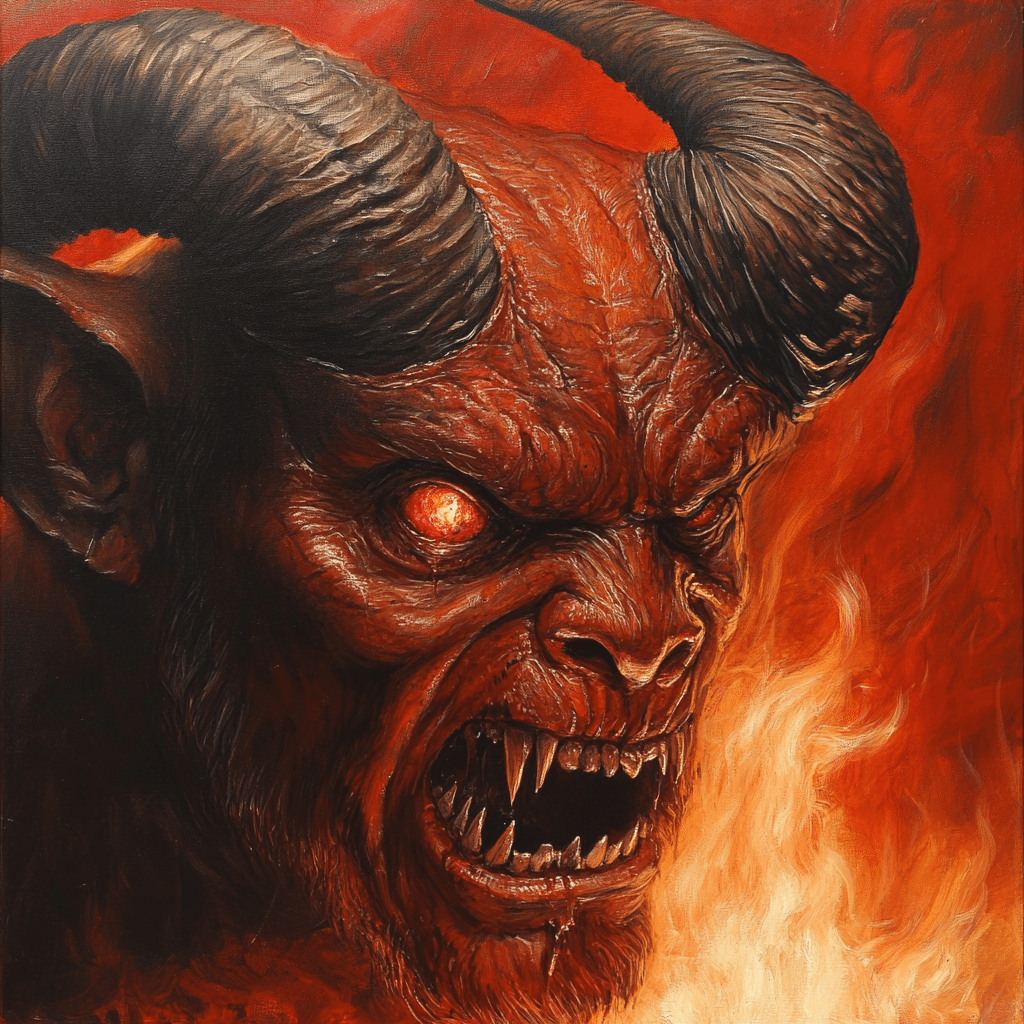When we dive into the concept of el infierno, we’re stepping into a churning cauldron of emotions and theories. This dark space, often interpreted through various lenses, raises existential queries that have haunted humanity for centuries. From ancient religious texts to modern cinematic masterpieces, the ways in which el infierno is depicted reflect much more than fear of punishment; they echo deep societal dilemmas and personal struggles. So, grab some popcorn and let’s explore this captivating theme in various forms of storytelling, especially as we highlight films that resonate with el infierno’s profound legacy!

Understanding el infierno: Historical Context and Cultural Significance
El infierno isn’t just about flames and suffering; it embodies centuries of human fear, philosophy, and morality. Ancient texts across civilizations, especially within Christianity and indigenous Latin beliefs, have crafted a narrative that evolves consistently. Historically, hell has been synonymous with eternal damnation, but many cultures view it as a temporary state of challenge or purification.
This duality opens the door to understanding that el infierno is as much about transformation as it is about punishment. Artistic interpretations through paintings, literature, and, of course, film have frequently conjured images that reflect societal fears. Just as the light and dark of Hieronymus Bosch’s work showcase hell’s grotesqueness and absurdity, filmmakers, too, have harnessed this depth to impart complex messages, speaking to societal conflicts over the centuries.
In our quest to decode el infierno, we also examine how societal fears can manifest in art as a response to cultural upheaval. This gives us juicy insights into films exploring the human condition with relatable themes. So, done with the philosophical mumbo-jumbo? Not quite yet! We’re swinging back into the cinematic arena where directors wrestle with el infierno’s dark legacy.

Top 7 Films that Grapple with el infierno’s Existential Themes
Cinema has been a powerful vehicle for grappling with the essence of el infierno. Here’s a list of seven films that navigate this dark territory, each one illuminating the human experience in unique ways:
In this Guillermo del Toro masterpiece, set against the backdrop of post-Civil War Spain, a young girl’s journey through a mythical labyrinth explores el infierno manifested through both fantastical and brutal realities. The unsettling tones whisper conversations about tyranny and rebellion.
Mel Gibson’s vivid depiction of Christ’s last hours is a haunting experience that lays bare human suffering and sin. The visuals invite a personal confrontation with el infierno, emphasizing the divine dichotomy of pain and redemption.
In this Spanish psychological thriller, a futuristic prison where food is distributed from the top floor downward metaphorically reflects societal structures. Each descent into el infierno of despair exposes harrowing truths about humanity’s fragility, exposing brutal social commentary.
This indie gem is an exploration of grief, giving viewers a taste of el infierno through visual storytelling of internal struggles. The haunting atmosphere captivates the audience, drawing them into a narrative that’s both heartbreaking and deeply human.
Directed by Luis Buñuel, this film paints a provocative picture of poverty and neglect in Mexico, likening the urban experience to a hell we must confront. With its societal critiques, it reflects the real struggles faced by marginalized groups, offering raw and intense portrayals.
A multi-generational tale weaving through political turmoil and personal tragedies, this film presents el infierno as an ongoing cycle. Emphasizing trauma’s recurrence, it asks viewers to ponder how external hells affect internal realities.
In Alejandro Amenábar’s intense psychological thriller, media violence morphs into a hellish nightmare for its characters. Exploring the thin lines between voyeurism and participation, it serves as a chilling reflection on society’s desensitization to suffering.
That’s a wrap on our film spotlight! Each flick opens a gateway to deeper discussions about the nature of el infierno—truly a captivating journey worth taking.
Theological Interpretations of el infierno: A Comparative Analysis
Diving into the theological waters surrounding el infierno, we can distinguish various interpretations. Catholicism traditionally views hell as an eternal place of punishment for disobedient souls. It’s a strong belief that emphasizes the weight of moral choices and justice.
On the other hand, many indigenous beliefs in Latin America perceive hell less as a place of eternal damnation and more as a temporary phase for purification. This perspective allows for transformation, suggesting that el infierno can lead to personal or communal regeneration. Scholars like Gustavo Gutiérrez argue that this interpretation brings us closer to understanding human suffering and justice—a refreshing take amidst the grim facts.
Whether we’re sitting in a pew or viewing a film, these various views of el infierno collide, reminding us that every cardinal sin, every torment, and every redemption builds a richer narrative tapestry. The theological interpretations of el infierno lead us deep into our consciousness, guiding us to reflect on our values and beliefs.
The Psyche of el infierno: Psychological Perspectives on Fear and Punishment
Now, let’s get into the thick of it! How does el infierno cater to our fears and beliefs? Psychologically, the fear of damnation can push individuals toward certain behaviors or discourage them from making moral missteps. Carl Jung’s theories, especially those surrounding the archetype of the shadow, shine a light on how our darker natures affect our actions and moral choices.
The experience el infierno creates in individuals not only shapes personal psyche but resonates through collective societal norms. You know how sometimes a terrible horror film leaves you peeking at shadows after the credits roll? It’s similar to how our inherent fears of punishment influence societal standards, morals, and even laws.
In essence, the psychological implications of el infierno push us to acknowledge aspects of ourselves we might ignore. Confronting these fears can lead to growth, compassion, and acceptance of both our dark and light sides. It’s a relentless cycle that keeps us rooting for redemption in the end.
Artistic Representations of el infierno Across Cultures
El infierno has provided a rich vein for artists to tap into, resulting in powerful representations throughout history. From the chaotic compositions of Hieronymus Bosch to the intense emotional landscapes captured by Francisco Goya, these artists have rendered hell’s anguish in ways that resonate with viewers. Bosch’s The Garden of Earthly Delights uniquely combines paradise and damnation, while Goya’s Witches’ Sabbath dwells in fear and judgement, giving us visceral insights into the darker sides of humanity.
Fast forward to modern times, urban artists often reinterpret these classic themes through graffiti and street art, translating el infierno into contemporary contexts that reach new audiences. As they provoke thoughts about societal ills, these interpretations expand our understanding of hell from one generation to another.
Every artistic vision serves as a case study not just in creativity but also in navigating societal fears and moral dilemmas. Those depictions help viewers not only understand el infierno but reflect their own lived experiences, making the concept universally relevant and ever impactful.
el infierno in Contemporary Media: Reflections and Reimaginations
Fasten your seatbelts because this segment takes us through the captivating landscapes of contemporary media where el infierno shines. Video games and digital storytelling have emerged as powerful formats for exploring hellish environments. Take “Dark Souls,” for example. This franchise thrives on its punishing difficulty and tormenting settings reflecting classic interpretations of el infierno, challenging players’ skill and perseverance.
We also see el infierno in series like The Midnight Gospel, where humor and philosophical musings converge to explore existential dilemmas through vibrant yet haunting realms. This refreshing approach effectively engages audiences in discussions about life, death, and everything in between, recontextualizing el infierno into a form of relatable entertainment.
Through these contemporary explorations, society navigates the complexities of existence, creativity, and introspection, transforming el infierno from a traditional concept into a nuanced landscape we can examine in new lights.
Innovative Insights
As we’ve traversed through the realms of el infierno, it’s clear that its journey through time offers us profound insights. It embodies our fears, aspirations, and growth, urging us to question existence and morality at every turn. The stories and interpretations showcased remind us that el infierno serves not only as a reflection of our struggles but invites us to delve deeper into self-exploration and understanding.
In navigating the dark legacy of el infierno, we resonate with the broader human experience—holding potential for transformation, healing, and hope. So, the next time you fire up your favorite film, remember the intricate layers of el infierno and let it awaken your understanding of the human spirit.
And while you’re at it, if you want to get fully immersed in these cinematic experiences, consider checking resources about the cast Of your favorite flicks or dive into the latest on Keanu Reeves and his evolving journey in the industry Keanu Reeves net worth. Whether it’s the intricate details of el infierno in film or engaging debates from real life, we can’t get enough of this dark legacy!
Now, ready your Netflix or your theater tickets and enjoy the ride through the deeper meanings behind cinematic portrayals of el infierno. After all, what could be more thought-provoking than movies that challenge us to reflect on our own natures?
El Infierno: A Gripping Journey Through Its Dark Legacy
Unearthing the Layers of El Infierno
Did you know that “El Infierno,” directed by Luis Estrada, stands as one of Mexico’s most notable films? It’s not just a film; it’s a biting commentary on the country’s drug war. Released in 2010, the movie delves into the chaos and destruction brought about by narco-trafficking, with a rawness rarely seen in cinema. Through its dark humor and thrilling narrative, “El Infierno” explores how crime can seep into the very fabric of society—much like how one might find a community hidden between urban chaos, making you wonder if is Orange Park in Jacksonville could hide its own stories. The film takes viewers on a riveting ride through life choices where one can feel engulfed by corruption and moral dilemmas.
A Cinematic Influence on Society
In a twist of fate, many viewers began comparing “El Infierno” to classic movies like “Scarface” and “The Godfather.” Its storytelling influences are clear and make the narrative all the more intoxicating. Similar gripping tales can be spotted from real-life heroes to fantastic stories such as Super Man: The Christopher Reeve Story showtimes, which remind us that not all tales of personal struggle end in despair. The vivid portrayal of the characters in “El Infierno” grips the hearts of many, showcasing the thin line between good and evil—something we can draw parallels to even in unexpected contexts, like pondering the lighthouse map, which outlines both the beauty and peril of navigating darkness.
Fun Behind the Scenes
Behind the camera, the film’s success didn’t come without its complications. It faced censorship and political pushback, but that only added fuel to its fiery narrative. The cast experienced a transformative journey, reflecting their characters deeply. Just as a classic VW Thing can bring a sense of nostalgia through time, the film utilizes its historical context to resonate with audiences. It captures the intensity of human ambition, prompting viewers to ponder the moral costs of pursuing wealth. And for those looking for a fun way to connect with friends after a deep film experience? How about a game of Pummel Party to lighten the mood? Laughter and joy can often clash with heaviness in films, just like the juxtaposition in “El Infierno.”
El Infierno is not just a movie but a thought-provoking reflection of society’s struggles. It pulls back the curtain on harsh realities, all while providing engaging stories to digest—one that stays relevant beyond its release. Each twist and turn reminds us that even amidst the darkest times, there’s always something enlightening just ahead, an ever-captivating journey through its dark legacy.





